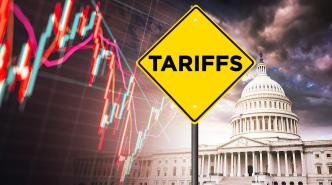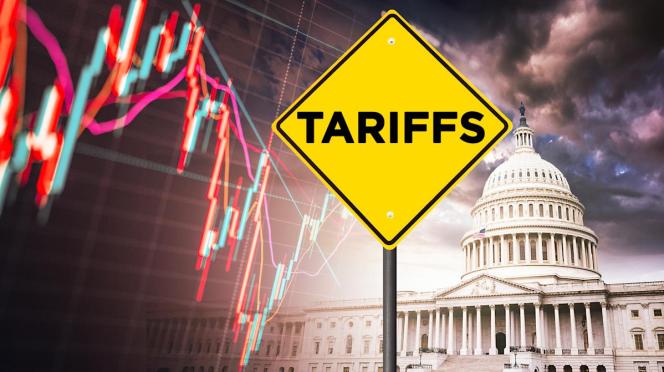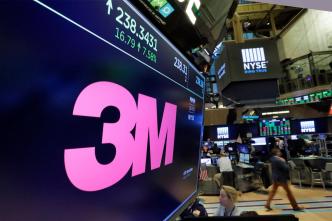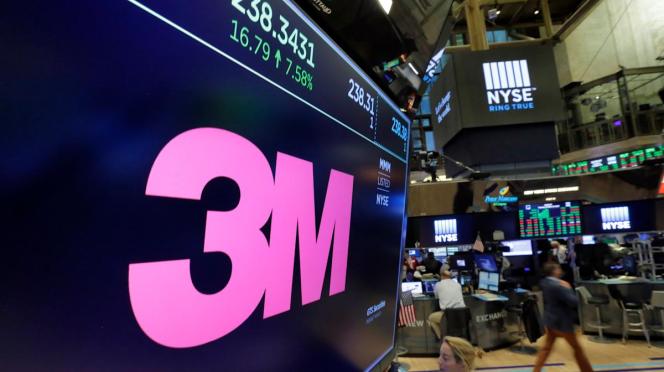What to watch this week
Stocks are back near record highs, but a flurry of trade announcements, deals, and extensions kept investors on their toes last week. In the week ahead, a busier economic and earnings calendar will offer them more to chew on.
Inflation data out Tuesday morning will set the economic agenda for the week. The Consumer Price Index (CPI) will be a key data point for investors and policymakers to weigh, with the Federal Reserve’s next interest rate decision looming less than two weeks away.
On the earnings side, all the major US banks will report results this week, with renewed investor enthusiasm about the IPO and M&A markets, along with Wells Fargo’s (WFC) freedom from a decade of more stringent regulatory restrictions, likely to feature.
Results from Netflix (NFLX) will kick off earnings from big US tech firms, with ASML (ASML) and Taiwan Semiconductor Manufacturing (TSM) set to offer key updates on the AI-related chip boom. PepsiCo (PEP), United (UAL), and American Express (AXP) are among the other notable firms set to release their quarterly results.
The Netflix logo on the back of a sweatshirt on December 01, 2024 in New Orleans, Louisiana. (Photo by Aaron M. Sprecher/Getty Images) · Aaron M. Sprecher via Getty Images
Data from FactSet published July 3 showed analysts are coming into second quarter earnings season expecting 5% earnings growth for the S&P 500 (^GSPC). Should this forecast come through, it will mark the slowest pace of profit growth since the fourth quarter of 2023.
The second quarter includes the peak of tariff-related uncertainty — Trump’s shocking “Liberation Day” announcement took place on the second day of the quarter. But the market’s recent rally suggests the backward-looking set of results companies will roll out in the weeks ahead have already been discounted.
In the third quarter, analysts are expecting earnings will grow 7.3% over last year. Full-year profit growth is expected to clock in at 9%, according to FactSet data. In 2026, earnings should grow 13.9%, according to analyst forecasts.
Second quarter earnings, then, appear set to reflect the trough of corporate America’s mini-cycle of panic, acceptance, then relief around Trump’s tariff goals, the whole of which took about five weeks in April and May.
This week, as Trump again rolled out tariff announcements that left some of America’s trading partners surprised, investors largely took the news in stride. The worst, it seems, is past us.
New tariffs announced on Canada late Thursday and Trump’s decision to float higher blanket tariffs on all US imports contained echoes of the headlines that shook markets earlier this year. This time, the reverb barely disrupted the market’s rhythm.
Read more: What Trump’s tariffs mean for the economy and your wallet
As the president himself told NBC News last week, “I think the tariffs have been very well received. The stock market hit a new high [on Thursday].”
And the S&P 500 fell just 0.33% from its record on Friday.
U.S. President Donald Trump speaks to the press before boarding Marine One on the South Lawn of the White House in Washington, D.C., on July 11, 2025. (Photo by MEHMET ESER/Middle East Images/AFP via Getty Images) · MEHMET ESER via Getty Images
With investors — and the president — waiting with bated breath for the Federal Reserve to begin cutting interest rates, Tuesday’s inflation data isn’t likely to accelerate the central bank’s urgency.
Wall Street economists expect to see inflation move further from the Fed’s goals, with “core” consumer prices, which exclude food and gas and are more closely watched by the Fed, set to rise 2.9% over the prior year in June. On a monthly basis, both “core” and headline inflation is set to rise 0.3%.
Read more: How jobs, inflation, and the Fed are all related
“Inflation data in line with our forecasts will keep the Federal Reserve on the sidelines as it assesses the impact of tariffs on inflation, which is only starting to come into view,” wrote economists at Oxford Economics in a client note on Friday. The firm also noted the disinflationary benefit of lower oil prices that followed the onset of tariffs in the spring is rolling off the books.
All of which, in Oxford’s view, likely keeps the Fed on the sidelines at least through the summer.
Data from the CME Group as of Friday showed traders were pricing in just a 4.7% chance the Fed cuts rates later this month. A month ago, those odds were closer to 20%.
Trump, however, has remained consistent in his calls for lower rates, telling reporters this week he thinks Fed Chair Jerome Powell should resign immediately.
The challenge, for both Trump and the Fed, is that tariff policy only complicates the rate picture.
“The tariffs announced this week would raise the effective rate by around 2 [percentage points],” wrote Bank of America economist Aditya Bhave in a client note Friday.
“Based on the composition of imports over the last 12 months, the effective rate would rise to nearly 14%. In other words, there are upside risks to our base case that the effective tariffs will settle at around 10%.”
And although Bhave notes there appears room for tariff rates to be negotiated down, this policy uncertainty makes it harder for the Fed to cut interest rates.
“Chair Powell has repeatedly argued that the Fed wants greater clarity on the impact of policy changes before making its next move,” Bhave added. “Such clarity might not be forthcoming if there are risks of additional meaningful changes to the tariff regime.”
Federal Reserve Chairman Jerome Powell testifies before the Senate Banking, Housing and Urban Affairs Committee Wednesday, June 25, 2025. (Tom Williams/CQ-Roll Call, Inc via Getty Images) · Tom Williams via Getty Images
This year’s stock market volatility has created an ample — if not quite equal — amount of volatility in Wall Street forecasts on where the market will finish the year.
Last week offered the latest case in point.
Strategists at both Goldman Sachs and Bank of America raised their price targets on the S&P 500 in notes this week, with Goldman raising its year-end target to 6,600 and BofA putting a 6,300 forecast on where the benchmark index will close this year. The firms had been looking for the index to settle at 6,100 and 5,600, respectively, ahead of these revisions.
The S&P 500 closed on Friday at 6,259.
In a note to clients published Tuesday, Bank of America’s head of US equity strategy, Savita Subramanian, cited “Corporate America Exceptionalism” as a driving force in revising the outlook for stocks higher.
In essence, the S&P 500 is now constituted by businesses with stronger earnings profiles that are better able to weather the uncertainty of tariffs and which are, ultimately, less sensitive to the economic cycle. All of which bolsters the case for earnings growth to remain strong.
In the second quarter, the Communication Services (XLC) and Technology (XLK) sectors are expected to grow earnings by 29.5% and 16.6%, respectively.
These sectors house five of the “Magnificent Seven” names — Amazon (AMZN) and Tesla (TSLA) are in the Consumer Discretionary (XLY) sector — and are at the center of the AI trade. Only Utilities (XLU), another sector that’s been a surprise AI beneficiary with power demand surging as data centers are built out, is expected to grow earnings at a rate equal to or better than the overall index; both Utilities and the S&P 500 as a whole are forecast to grow earnings 5% in the second quarter.
And over the long term, the most important driver of stock prices is earnings growth.
Goldman Sachs’ chief US equity strategist David Kostin made a similar point, writing that the firm expects “the digestion of tariffs to be a gradual process, and large-cap companies appear to have some buffer from inventories ahead of the increase in tariff rates.”
The firm added that S&P 500 companies appeared to enter the second quarter with a good inventory buffer, and that earnings call commentary “shows S&P 500 firms plan to use a combination of cost savings, supplier adjustments, and pricing to offset the impact of tariffs.”
An outgrowth, no doubt, of corporates being more prepared for Trump’s tariff-motivated fiscal policy the second time around.
But it is the composition of the S&P 500 itself — an index now dominated by a handful of tech-adjacent giants — that ultimately buffers investors from much of the tariff turmoil.
Earnings: No major earnings reports set for release.
Economic data: No major economic data set for release.
Earnings: JPMorgan (JPM), Citi (C), Wells Fargo (WFC), BlackRock (BLK), State Street (STT), Bank of New York Mellon (BK), Albertsons (ACI), JB Hunt (JBHT)
Economic data: Consumer Price Index, month-over-month, June (+0.3% expected, +0.1% previously); Consumer Price Index, year-over-year, June (+2.6% expected, +2.4% previously); “core” Consumer Price Index, month-over-month, June (+0.3% expected, +0.1% previously); “core” Consumer Price Index, year-over-year, June (+2.9% expected; +2.8% previously); NY Fed Empire State Manufacturing index, July (-9 expected, -16 previously)
Earnings: Bank of America (BAC), Goldman Sachs (GS), Morgan Stanley (MS), PNC Financial (PNC), Johnson & Johnson (JNJ), United Airlines (UAL), ASML (ASML), Progressive (PGR), Alcoa (AA), Kinder Morgan (KMI)
Economic data: Producer price index, month-over-month, June (+0.3% expected, +0.1% previously); Producer price index, year-over-year, June (+2.5% expected, +2.6% previously); “Core” producer price index, month-over-month, June (+0.2% expected, +0.1% previously); “Core” producer price index, year-over-year, June (+2.7% expected; +3% previously); Industrial production, June (+0.1% expected, -0.2% previously); Federal Reserve Beige Book
Earnings: Netflix (NFLX), Taiwan Semiconductor Manufacturing (TSM), PepsiCo (PEP), US Bancorp (USB), Abbott (ABT), Cintas (CTAS), Interactive Brokers (IBKR)
Economic data: Retail sales, June, month-over-month (+0.1% expected, -0.9% previously); Retail sales, ex-auto and gas, June (+0.3% expected, -0.1% previously); Import price index, June (+0.2% expected, +0% previously); Initial jobless claims, week ended July 12 (235,000 expected, 227,000 previously); Philly Fed Manufacturing Index, July (-0.5 expected, -4 previously); Homebuilder sentiment, July (33 expected, 32 previously)
Earnings: 3M (MMM), American Express (AXP), Charles Schwab (SCHW), Ally (ALLY), Truist (TFC), Regions Financial (RF), Huntington Bancshares (HBAN)
Economic data: Housing starts, June (+3.5% expected, -9.8% previously); Building permits, June (-0.3% expected, -2% previously); University of Michigan consumer sentiment, July, preliminary reading (61.5 expected, 60.7 previously)
Click here for in-depth analysis of the latest stock market news and events moving stock prices
Read the latest financial and business news from Yahoo Finance














